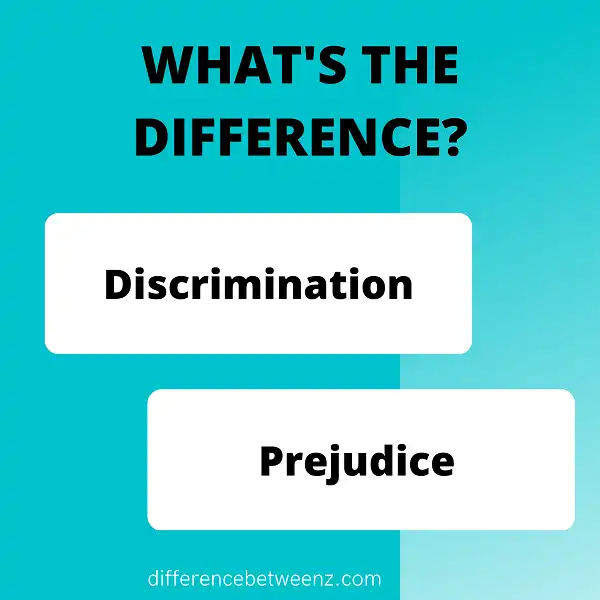People often use the words discrimination and prejudice interchangeably, but they actually have different meanings. Discrimination is when you treat someone unfairly because of a protected characteristic, such as their race or religion. Prejudice means having preconceived notions about someone before getting to know them, usually based on stereotypes. So, discrimination is the act of treating someone differently because of a protected characteristic, while prejudice is the feeling or belief that someone is inferior or not worthy of respect because of their group identity. Both discrimination and prejudice are wrong and should be avoided.
What is Discrimination?
Discrimination is the act of differentiating between two things. In the context of human interaction, it can refer to the act of making distinctions between people based on their race, ethnicity, sex, or other characteristics. Discrimination can be intentional or unintentional, and it can occur at an individual or institutional level. Unfortunately, discrimination is all too common in our society, and it can lead to a number of negative outcomes, such as reduced access to education and employment opportunities. Discrimination can also result in feelings of isolation and low self-esteem. combating discrimination is essential for promoting social justice and ensuring that everyone has an equal opportunity to succeed.
What is Prejudice?
Prejudice is an unfavorable opinion or feeling formed beforehand or without knowledge, thought, or reason. It’s often interchangeably used with the word “bias.” A person can be prejudiced against another person because of their race, gender, religion, nationality, etc. Prejudice leads to discrimination, which is the unfair treatment of a person or group of people based on their prejudiced views. Prejudice and discrimination can have a negative impact on someone’s life by limiting their opportunities and chances for success. It can also lead to aggressive or violent behavior toward the person or group that is being prejudiced against. Prejudice and discrimination are serious social problems that need to be addressed. Education is one way to help prevent prejudice and discrimination from happening. By teaching people about the harmful effects of prejudice and discrimination, we can hope to create a more accepting and tolerant world.
Difference between Discrimination and Prejudice
Discrimination and prejudice are often used interchangeably, but they actually have different meanings. Discrimination refers to unfair treatment of someone based on their membership in a particular group. For example, if an employer refuses to hire someone because they are of a certain race or religion, that would be discrimination. Prejudice, on the other hand, refers to negative attitudes or beliefs about members of a particular group. So, if someone believes that all people of a certain race are lazy or unintelligent, that would be prejudice. Discrimination can lead to prejudice, but it is possible to hold prejudiced beliefs without engaging in discrimination.
Conclusion
Discrimination and prejudice are often used interchangeably, but they have different meanings. Discrimination is the act of treating someone differently based on a protected characteristic, while prejudice is the opinion or attitude about a certain group of people. We’ve looked at the definition of each term and some examples of discrimination and prejudice in action.


